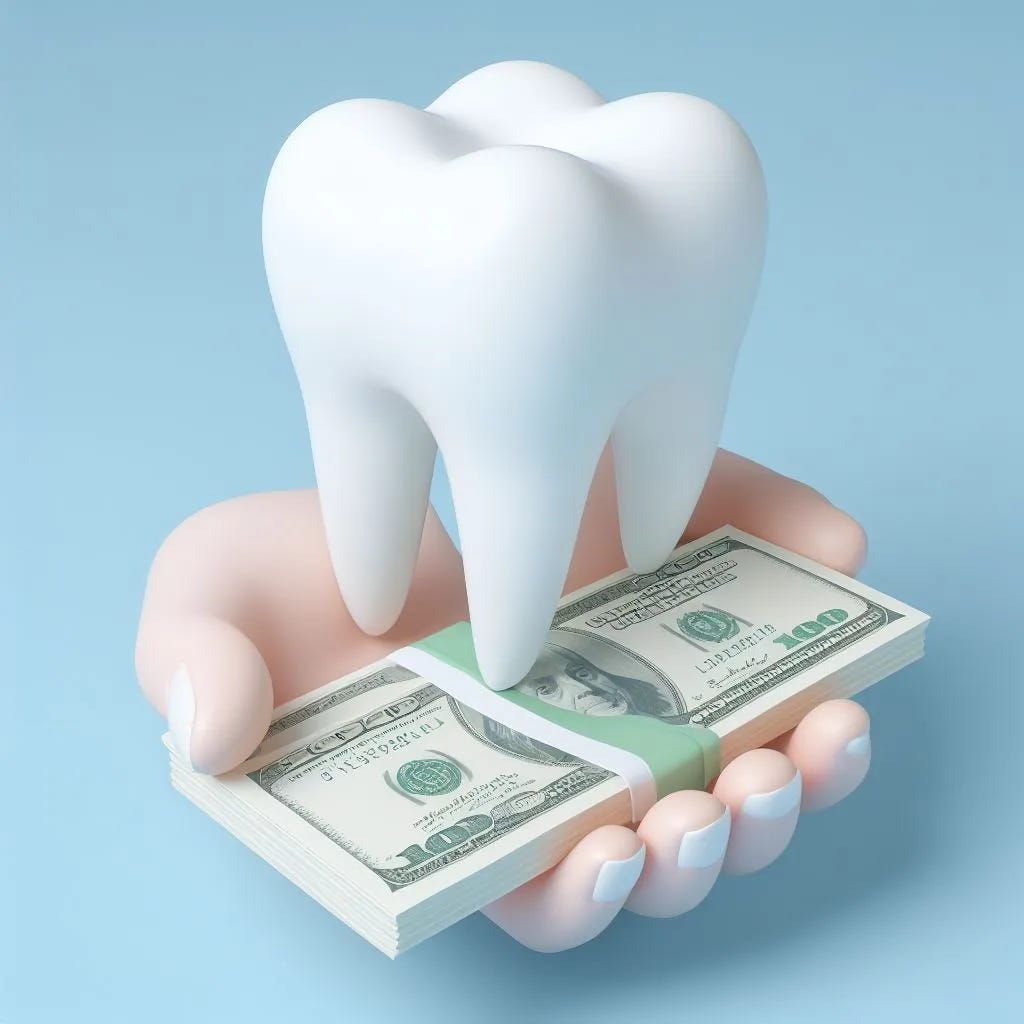Drilling down into the compassionate release of superannuation data
More detailed data on the compassionate early release superannuation has shed some light on where and who is using the scheme to fund their dental care.
I’ve previously written about the issues related to the compassionate release of superannuation, firstly back in April 2024 and then again in October 2024 when new data became available, showing a substantial increase in the number of people raiding their superannuation to fund dental treatment over the past three years. Nearly 22,000 Australians had their applications approved to withdraw $526.4 million from their superannuation accounts to pay for their dental care in 2023/24, a staggering 68% increase from the $313.4 million siphoned out of accounts the previous year. Dental treatment now makes up just over half of the $1.04 billion that was withdrawn from superannuation accounts last year under the compassionate release scheme, with nearly $1.3 billion released for dental treatment since 2018/19.
There was the inevitable pushback from some dental practitioners, who felt that the data simply reflected the dental needs that some patients had, and that with no other options available to them these patients had no choice but to use their retirement funds. This despite the Dental Board of Australia issuing a warning to practitioners about marketing the scheme to patients and noting they had already seen a spike in notifications related to the quality of treatment and patients being unnecessarily influenced to access their superannuation to fund care.
The updated data to June 2025 won’t be available until later this year, and the Australian Tax Office doesn’t publish half-yearly data for this. However, I have managed to obtain some more granular data that goes beyond just the number of applications and approvals and the total amount approved, to look at some demographic characteristics including age, income level and state of residence that sheds some more light on who is using the scheme to access dental care.
Firstly, the age profile of patients is generally not surprising, with a greater average approval amount per person in older people, peaking at an average of $29,721 for people aged 51-55 years in 2023-24.
However there has been a significant growth in the number of people accessing their superannuation at a younger age. The biggest change in the overall numbers since 2020-21 has been in younger people aged 26-35 years and those aged 61-65 years. Whilst it is perhaps understandable that those approaching retirement might have both the dental needs and the retirement balance that would lead to this, it is problematic that a growing number of younger Australians are turning to their superannuation as a solution to their unmet dental treatment needs. Whilst the ATO does not have data on the number of dentists who are involved or the type of treatment that is being performed, it should concern policy makers that $69 million was taken out of superannuation accounts of people aged under 35 years. The long term financial ramifications here – for the individual and society – are profound. What are the ongoing maintenance requirements and costs for this complex dental treatment over the next 30-40 years for these patients (remember that we are talking about average treatment costs of nearly $18,000 in this age group). And what of the impact on retirement savings, particularly if these people are forced to raid their superannuation again to fund this maintenance? Will it push people back onto the pension in retirement, increasing the cost to governments (and ultimately society) as a consequence. This is very clearly a policy failure, and a false economy.
The state trends are also interesting. Both Victoria and Western Australia have been consistently above the national average over the past six years in terms of the amount approved per person, whilst Queensland and in particular ACT have been much lower. In total there was $151.8 million (29%) approved in Victoria and $141.3 million (27%) in 2023-24. This suggests a disproportionate amount of claims coming from these states considering that Victoria has 26% and Queensland 21% of the population.
Finally it’s worth looking at the income distribution of recipients. By far the biggest group are those with a taxable income of $45-120,000 – middle income earners who are clearly a group struggling to access dental treatment. And the rapid growth in the number of people in that group has been staggering over the past 3 years, driving most of the activity and representing $287.9 million of the $526.4 million spent in 2023-24. In addition, nearly 4,000 people with a taxable income less than $45,000 also accessed their superannuation for dental treatment last year.
On a per person basis, those lower income earners were accessing nearly $19,000 and the middle income earners $22,000. Interestingly, higher income earners (in the $120-180,000 bracket) were withdrawing $32,000 on average, and the highest income group more than $41,000 per person.
Unfortunately this data cannot be sliced and diced, to look at for example both age and income together which might shed some more light on how this scheme is being used. And there is no data on the clinical treatment provided to better understand the need that this scheme is addressing. Nonetheless, the picture that it paints is concerning, and there are many anecdotal stories from practitioners around Australia who share these concerns.
It will be interesting then to see what has happened over the past 12 months when the 2024-25 is finally released. Based on the recent trend, everything points to that overall figure jumping even higher, and I wouldn’t be surprised to see it reach $1 billion.
Federal Election 2025
The Federal Election has now been called for 3 May, leaving just over 5 weeks to fight for measures to improve access to dental care. Join the campaign to Give Medicare Teeth by emailing your Member of Parliament and the candidates your seat and ask them to commit to making access to dental care a priority by funding dental care properly.




